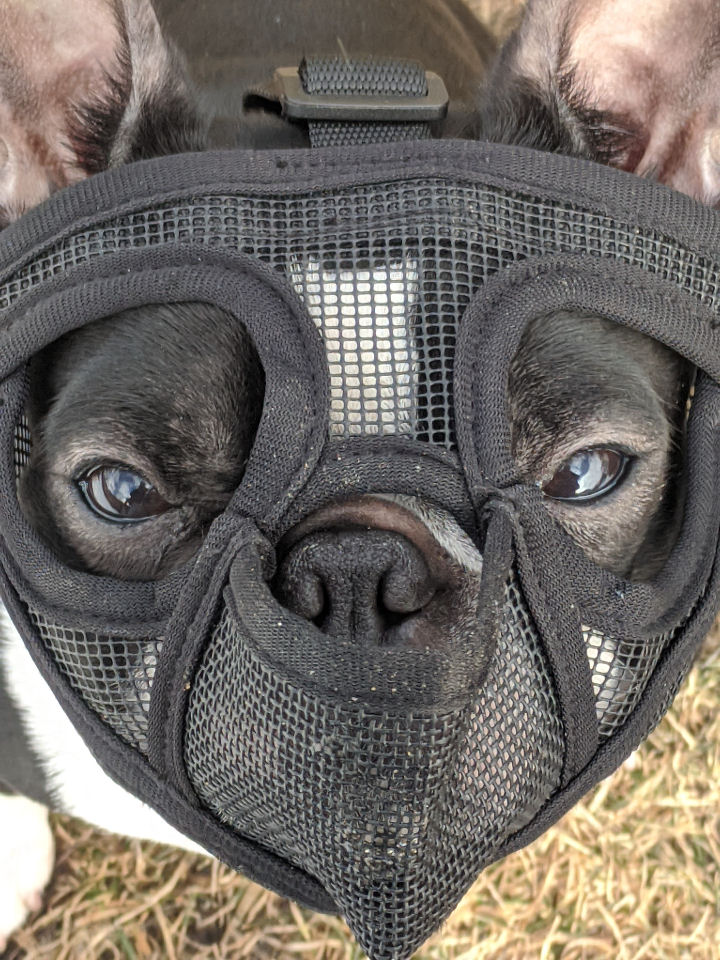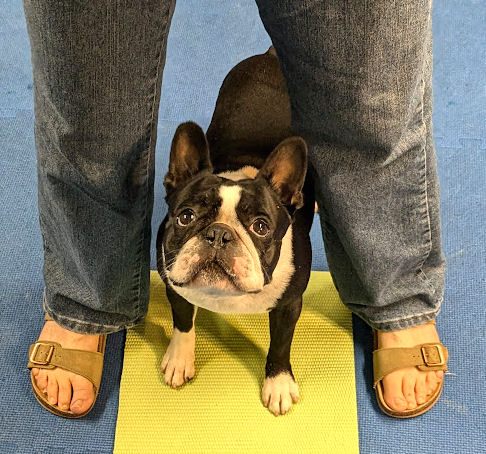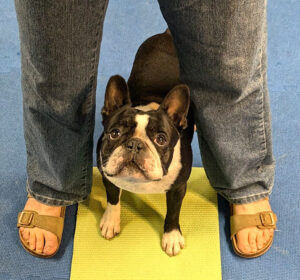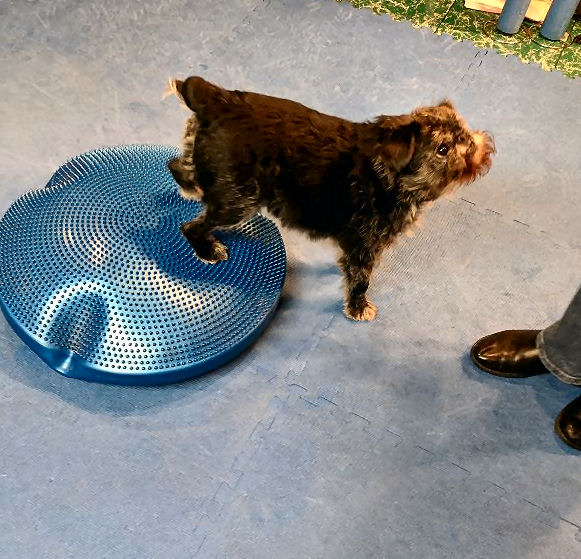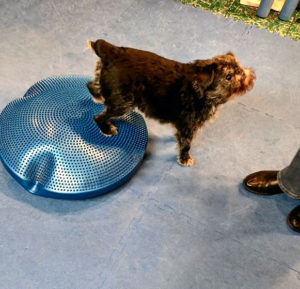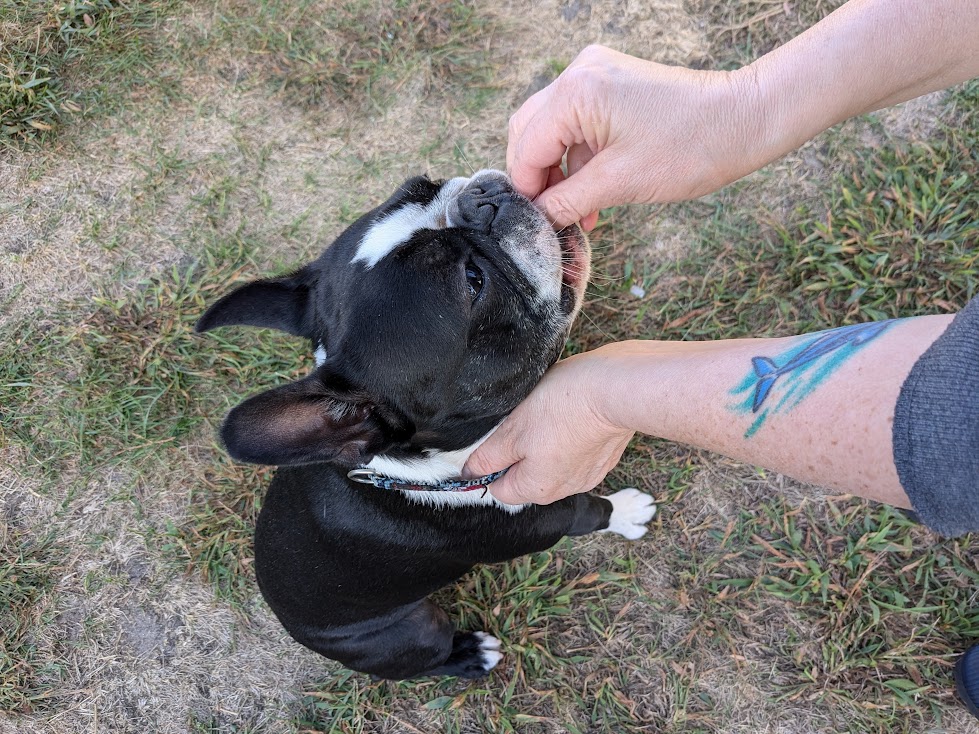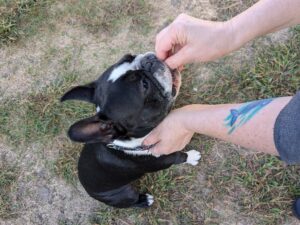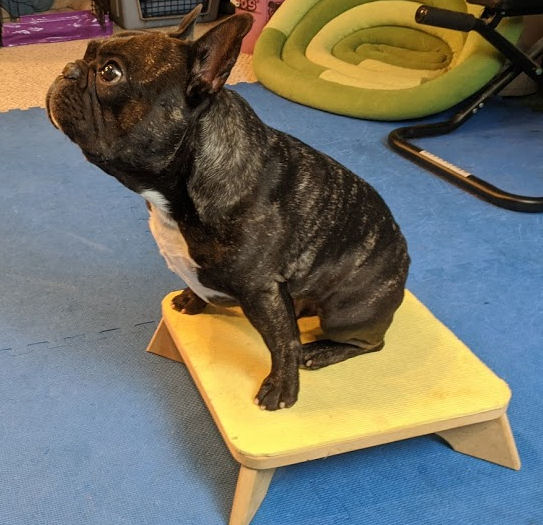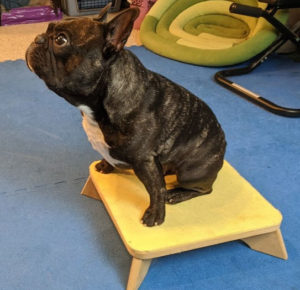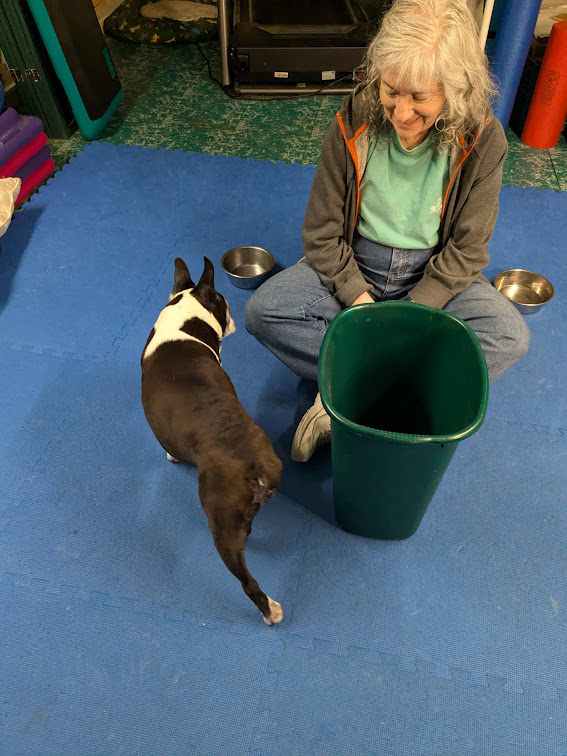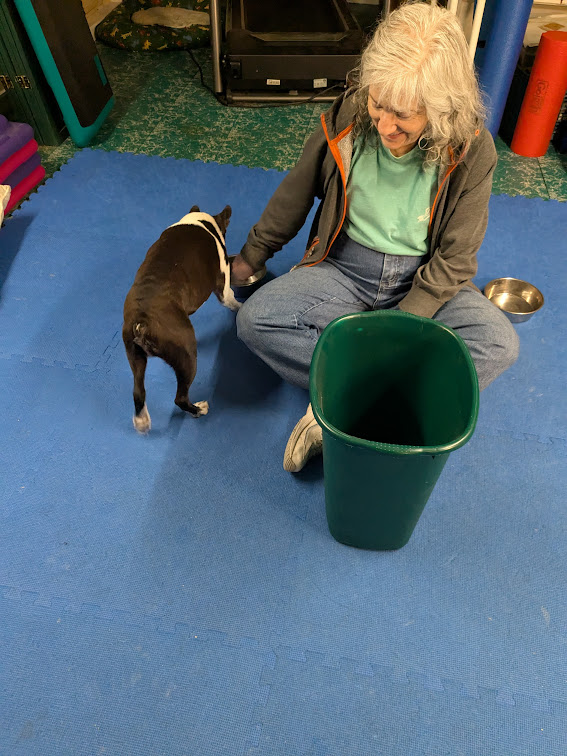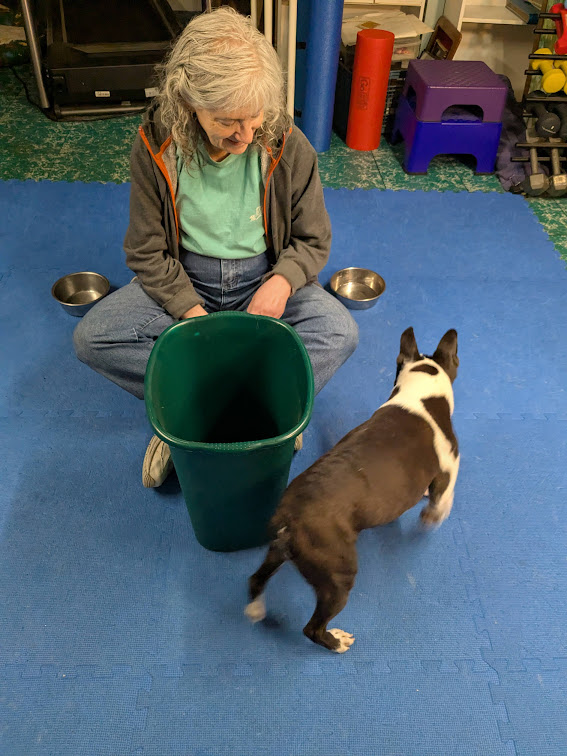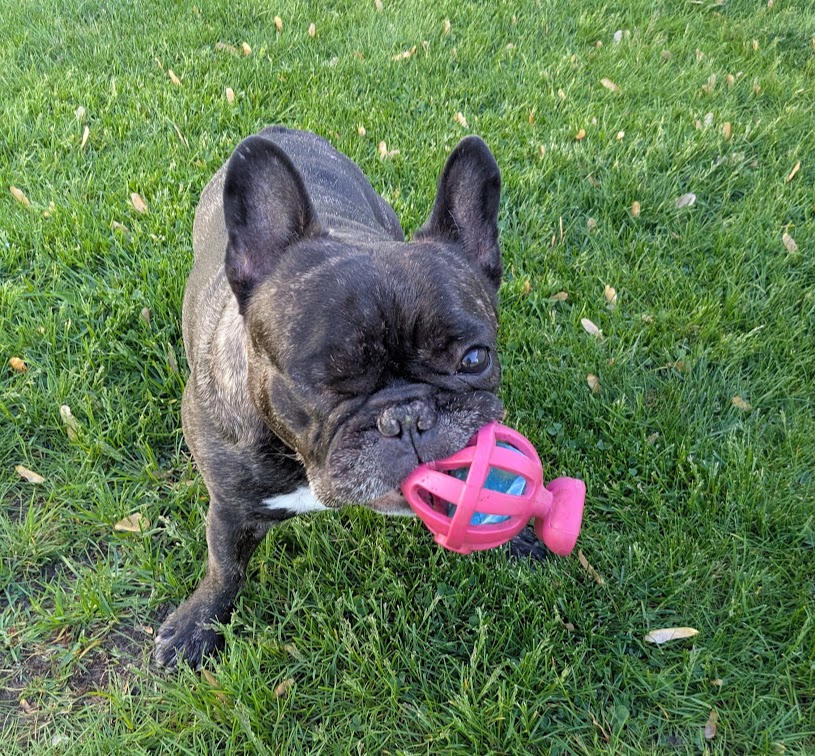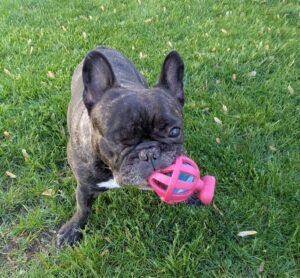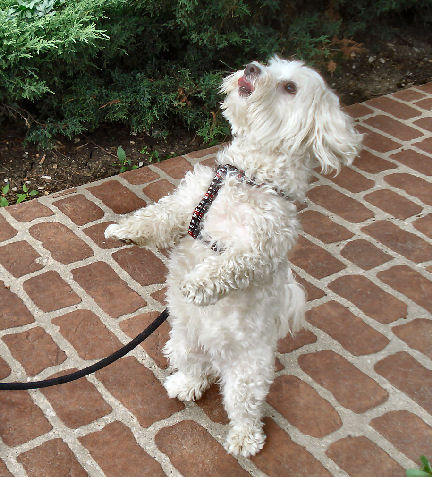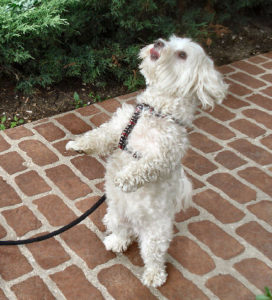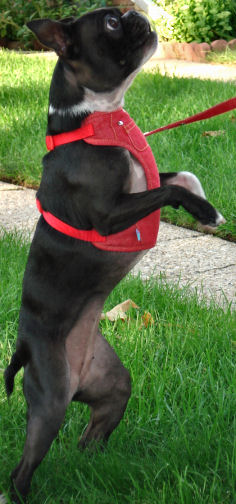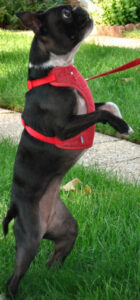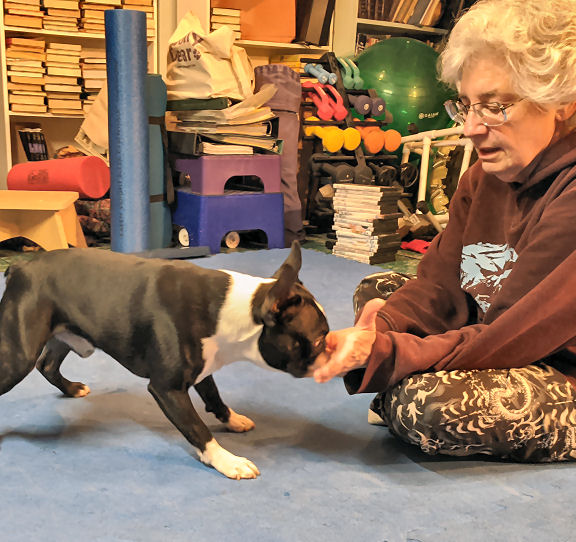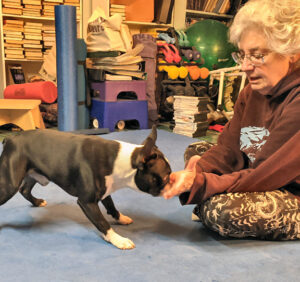What do you think when you see a person walking around with a muzzled dog? Are you wary? Do you grab your dog and cross the street? Thinking needs to change. In fact, muzzles are good management.
Sadly, the stigma attached to using a muzzle for your dog prevents many people from using one of the least intrusive, most useful dog management tools ever. Using a muzzle prevents your dog from starting any trouble and insures they won’t contribute to any they find.
Everyday wear
Take the case of a dog from our “Impulse Control” class. He’s a young dog, a medium-sized terrier. Let’s call him Sam. Sam is the first dog of a very nice young couple, and he does great in their apartment. He does okay on walks. He’s nipped two people in the elevator. That’s a problem. And a pretty big one.
Sam isn’t a mean dog. He’s a young, scared dog who doesn’t get the distance he needs to feel safe when he’s in an elevator. The absolute cardinal rule for fear-aggressive dogs is “distance is your friend.” The fear reaches a boiling point when the dog is trapped and unable to move away.
Sam’s people have to take the elevator. Sometimes they’re not going to be able to wait for an empty car, or be able to ask other people not to get in. Everybody’s got places to go and schedules to keep. What they can do, to make sure that everyone, including Sam, is safe.
Muzzle your dog
We started muzzle-training the dogs in impulse control class. Every dog should be accustomed to a muzzle – you never know what circumstances may require it. If your dog is injured, they will also be frightened. And they might lash out at people who are trying to help. Emergency vets and technicians routinely muzzle dogs – you can’t know how much pain a dog is in, or how it will react. Most dog owners, fortunately, don’t know how their dogs would react to an injury. Muzzles are good management – even the calmest, most well-behaved dog might react poorly to a perceived threat – especially if the dog is in pain. Plus, a muzzle means that your dog won’t pick up strange objects in the backyard.
The first step in muzzle-training is like any other game. Get the dog familiar with the object and reward interaction with the thing. Looking at it, sniffing it, pawing at it, taking it in their mouth – all are steps in familiarization. Reward each interaction. Ideally, put your hand through the muzzle to reward your dog, so the muzzle becomes part of the interaction.
Over the course of a few 2-Minute sessions, accustom the dog to the muzzle. Depending on the kind of muzzle, you can put your hand through while giving your dog treats. Start asking your dog to stick his nose/muzzle in the muzzle. If you don’t have one, or if the dog needs time to get used to the muzzle, use a plastic glass or cone and ask your dog to stick their nose in. Reward in or by the thing to build value in the interaction.
If your dog is skittish, don’t even try putting the muzzle on until your dog has made friends with it. We want dogs to believe that muzzles are no big deal. Because they’re not. Or at least they shouldn’t be. Muzzle-training your dog means you care about everybody’s safety in any situation. It’s “what if” training that we hope your dog will never need.
Not always everywhere
In Impulse Control class, we had no muzzles, so we used plastic cones to simulate something for the dogs to stick their faces into. Once they figured out that treats were involved, they were shoving their noses in as far as they could go.
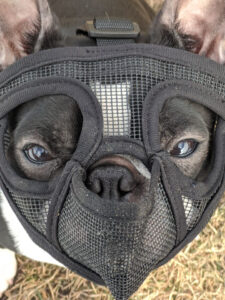
Sam’s parents have the task of finding a muzzle that works for them and their dog. (For a description of various types of muzzles, see “Every dog needs a muzzle.”) They asked if they had to use it all the time. The answer is yes. And no. Since Sam’s issues are in enclosed spaces, he needs to wear it in the apartment building and elevator. Once they get outside, it can come off. They can achieve the distance from other people/dogs/objects that Sam finds scary.
The elevator trip back home also requires the muzzle back on. And, if friendly neighbors are sharing the ride, by all means ask them to give Sam treats.
Defy dog logic
We’ve had people who say “I’m not giving a dog treats for growling at me!” That’s a complete misinterpretation of what’s going on. You’re not rewarding the growling, or reactive behavior. Instead, you’re proving to the dog that you’re not frightening and you’re a nice person. All people are nice.
That’s the message dogs should get from all strangers. Especially dogs who are somewhat fearful. The objective is to reassure them that you’ll keep them safe. They have nothing to fear. Not even fear itself. And muzzles are good management.

